There’s a wide range of indoor cycling apps out there that claim to make you a fitter and faster rider.
One that’s been around longer than most is TrainerRoad.
Unlike some of its competitors in the fast-evolving world of indoor cycling, TrainerRoad is focused almost exclusively on meeting the training demands of riders, rather than trying to replicate the real world in a virtual environment.
Want to know more? Here’s our guide to TrainerRoad: what it is, how it works, how much it costs and whether it might be the right indoor cycling app to help you enjoy the benefits of indoor training.
What is TrainerRoad?
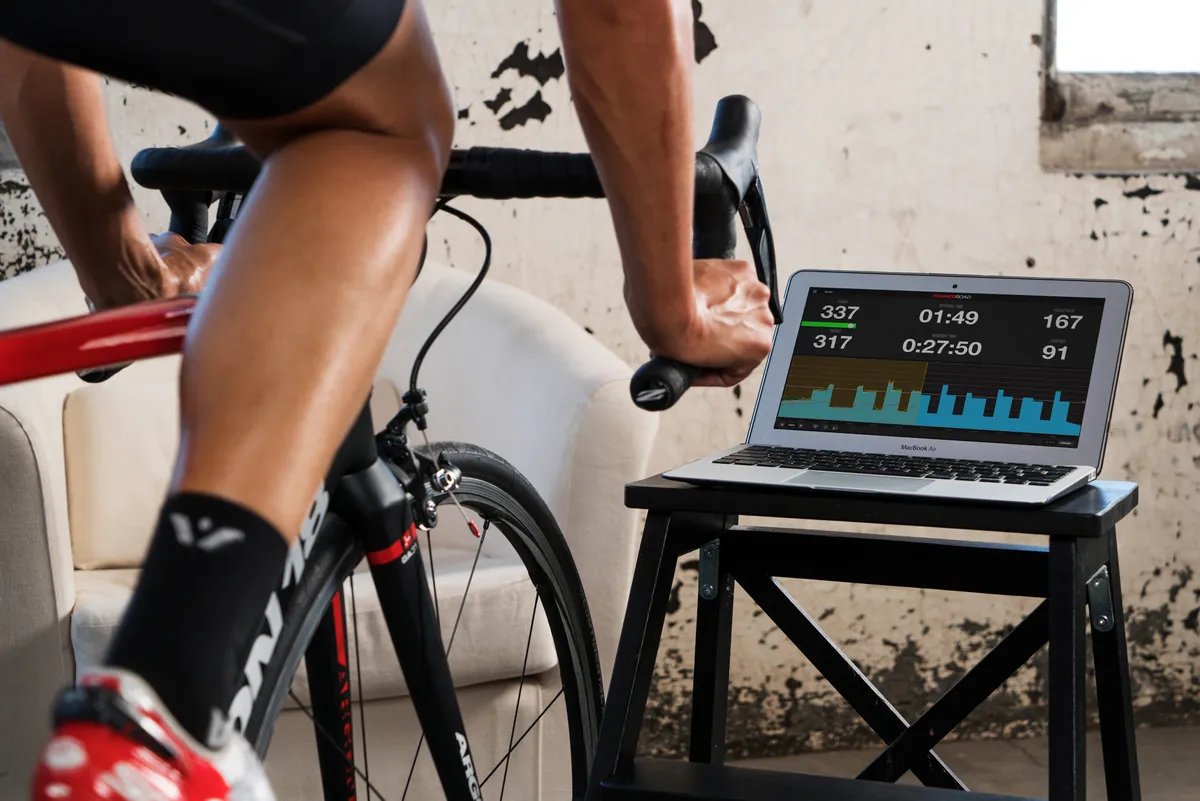
TrainerRoad is an online cycling training programme, with a suite of exercise routines that it claims will “make you faster with science-based, goal-driven training”.
Its main features are its personalisation and ability to fine-tune its recommended workouts to your aims and progress. It has plans for riders on road bikes, gravel bikes, mountain bikes, tri bikes and more.
TrainerRoad says its users have completed more than 150 million workouts over the 10 years since it launched, which it claims to use to spot trends that make cyclists faster. It says this enables it to derive your FTP, for example, without the need for a ramp test.
It has also built up a huge library of advice and guidance online on all aspects of training and nutrition.
What features does TrainerRoad offer?
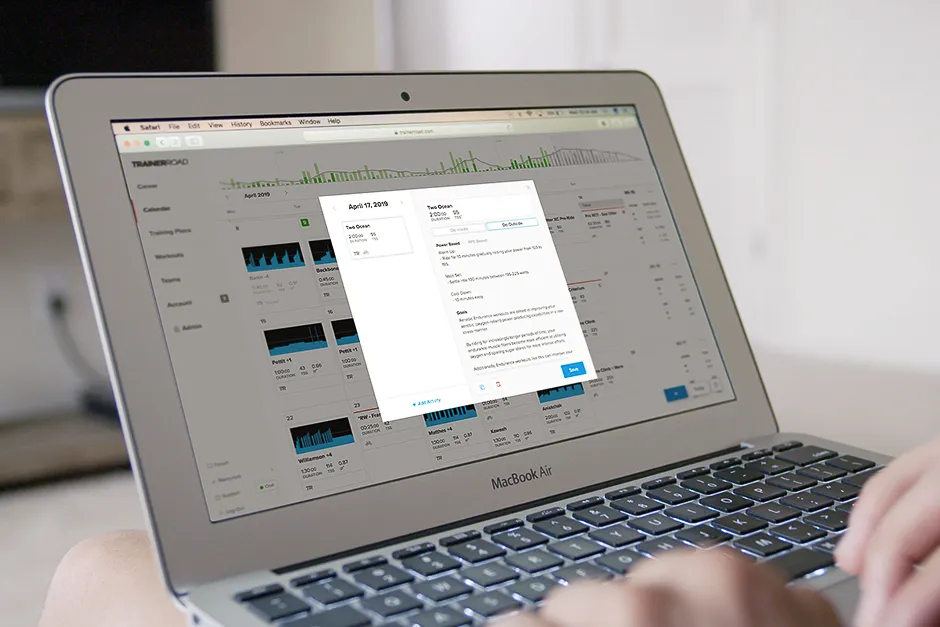
TrainerRoad is centred around its training plans and workout routines, as well as your personal training calendar and rider profile.
Its aim is to provide a personalised training programme based on machine learning, to tailor your workouts based on your goals, performance and lifestyle.
It doesn’t give you a gamified environment like Zwift, or Rouvy – we’ll cover the competition in more detail later – but instead homes in specifically on training.
Training plans and workouts
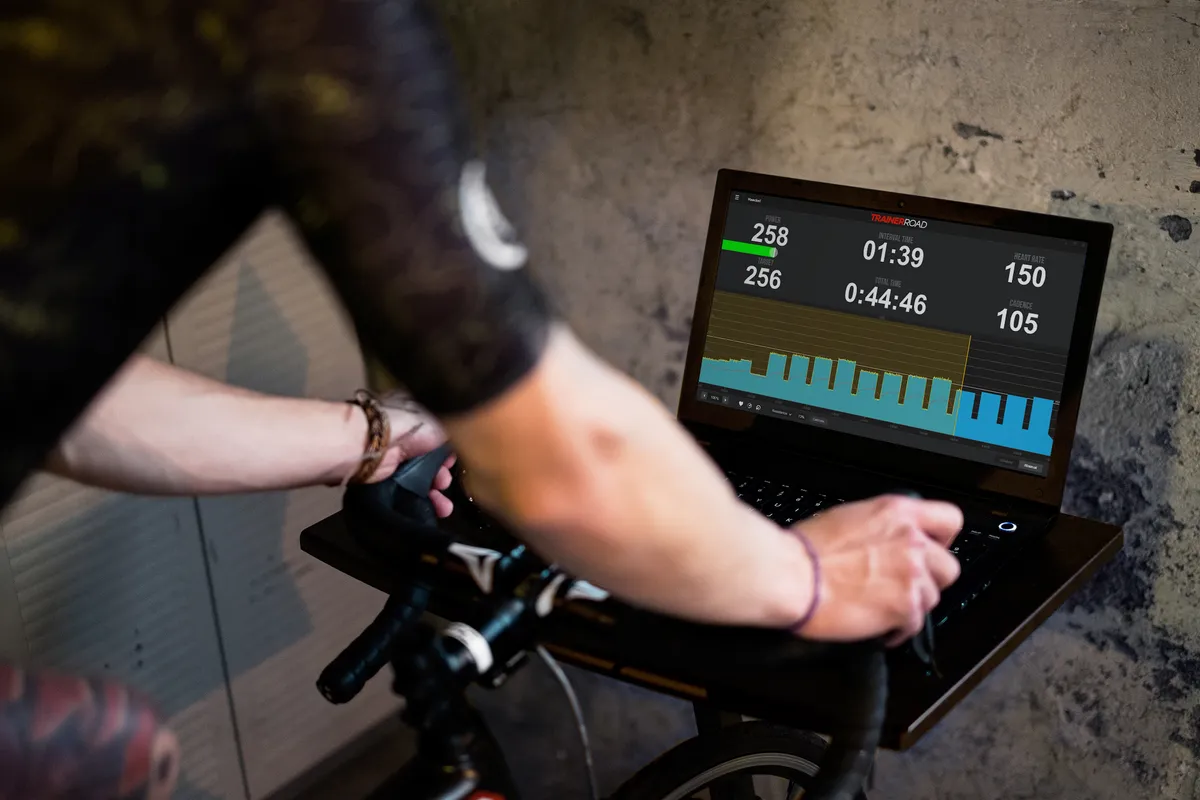
Let’s start with the basics. TrainerRoad says it offers 100 individual training plans and more than 3,000 workouts.
TrainerRoad’s Plan Builder sets a training plan based on six criteria:
- Training load
- Volume
- Experience
- Start date
- Target events or discipline
- Your schedule
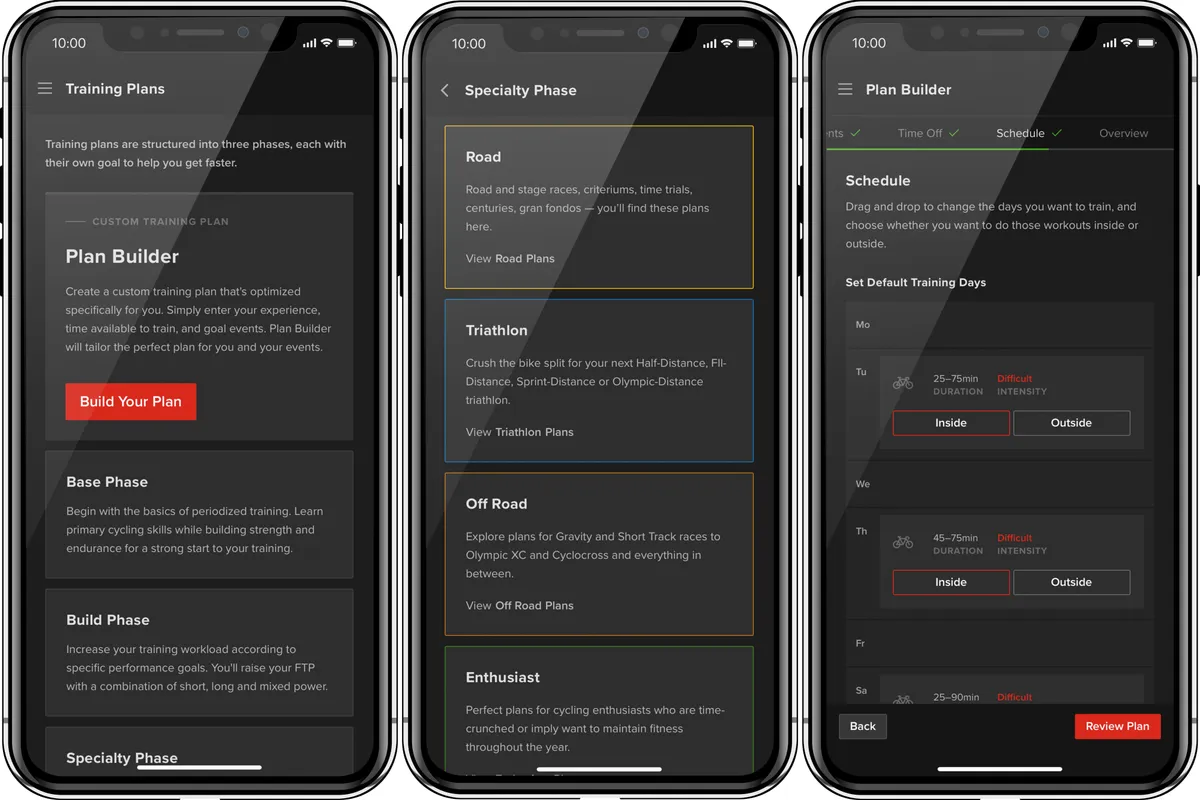
TrainerRoad will then provide an overview of your training plan, including its phases and your workouts.
Alternatively, if you don’t want to follow a structured plan, TrainerRoad’s TrainNow feature suggests recommended workouts based on your recent training history.
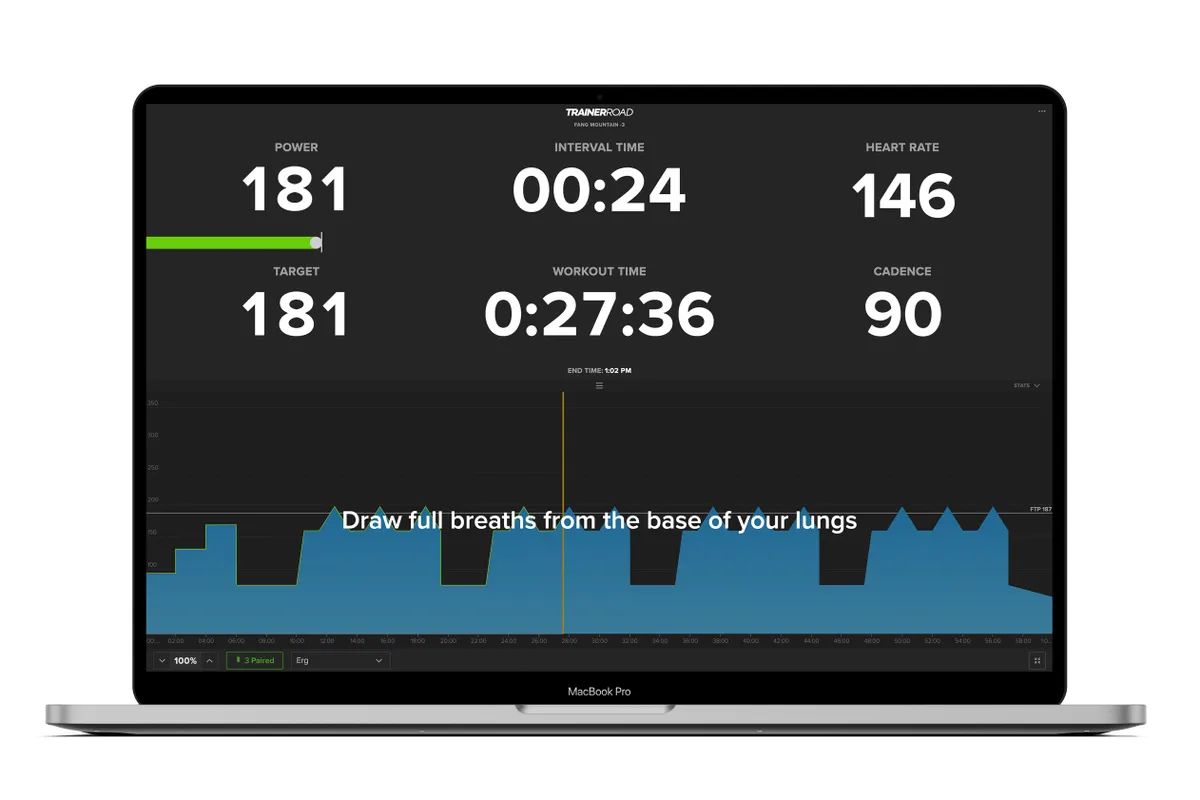
TrainerRoad’s workouts are visualised as a series of blue ramps to signify intervals. These are interspersed with recovery time, with text prompts and your ride data, such as heart rate, power, cadence, current power and target power, assuming you've got devices hooked up to measure all of these.
Adaptive Training
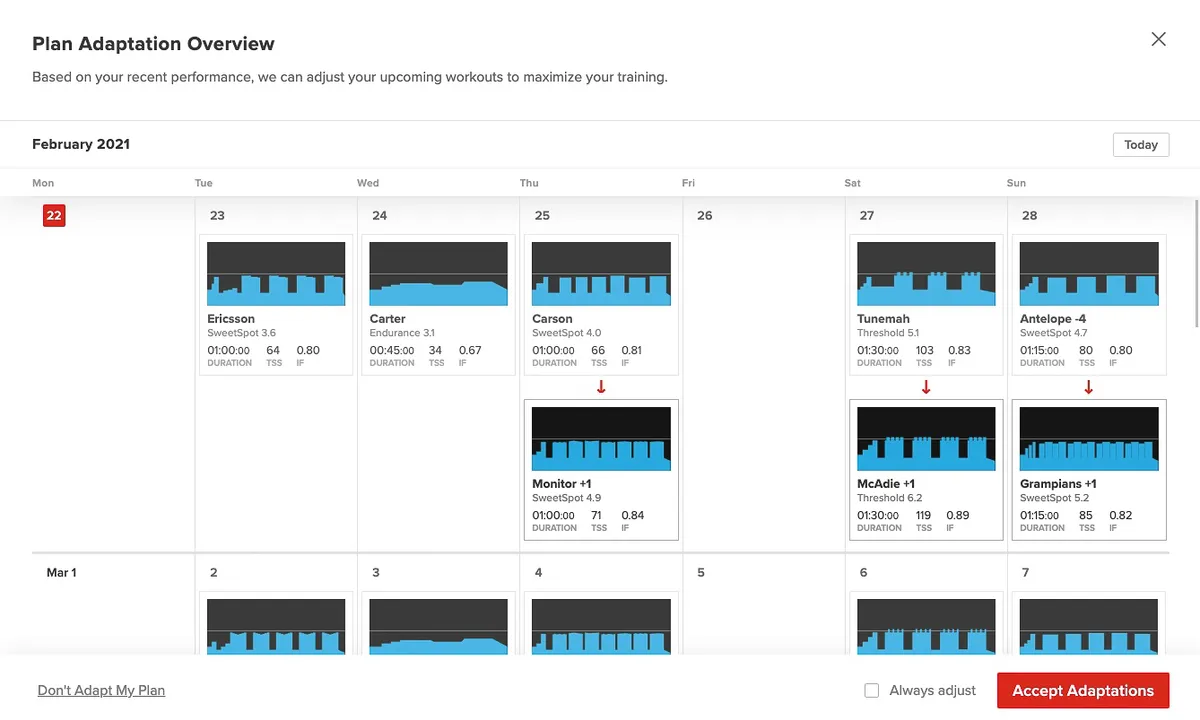
TrainerRoad claims its main advantage is its built-in analysis and feedback, based on machine learning, which combine to personalise your training plan and workouts on an ongoing basis, tailored to your goals, fitness level and current performance. TrainerRoad calls this Adaptive Training.
Adaptive Training was added to TrainerRoad in February 2021. Previously, the app’s training plans were devised by coaches and a rider left to their own devices once they’d selected a plan.
Now, Adaptive Training monitors performance in every workout you complete.
Once you’ve finished your workout, TrainerRoad’s AI-based system analyses how you’ve performed to determine what it calls your ‘Progression Levels’, using these to determine your future workout schedule, displayed in an interactive calendar.
This feedback loop repeats after every workout to help you reach your fitness objectives.
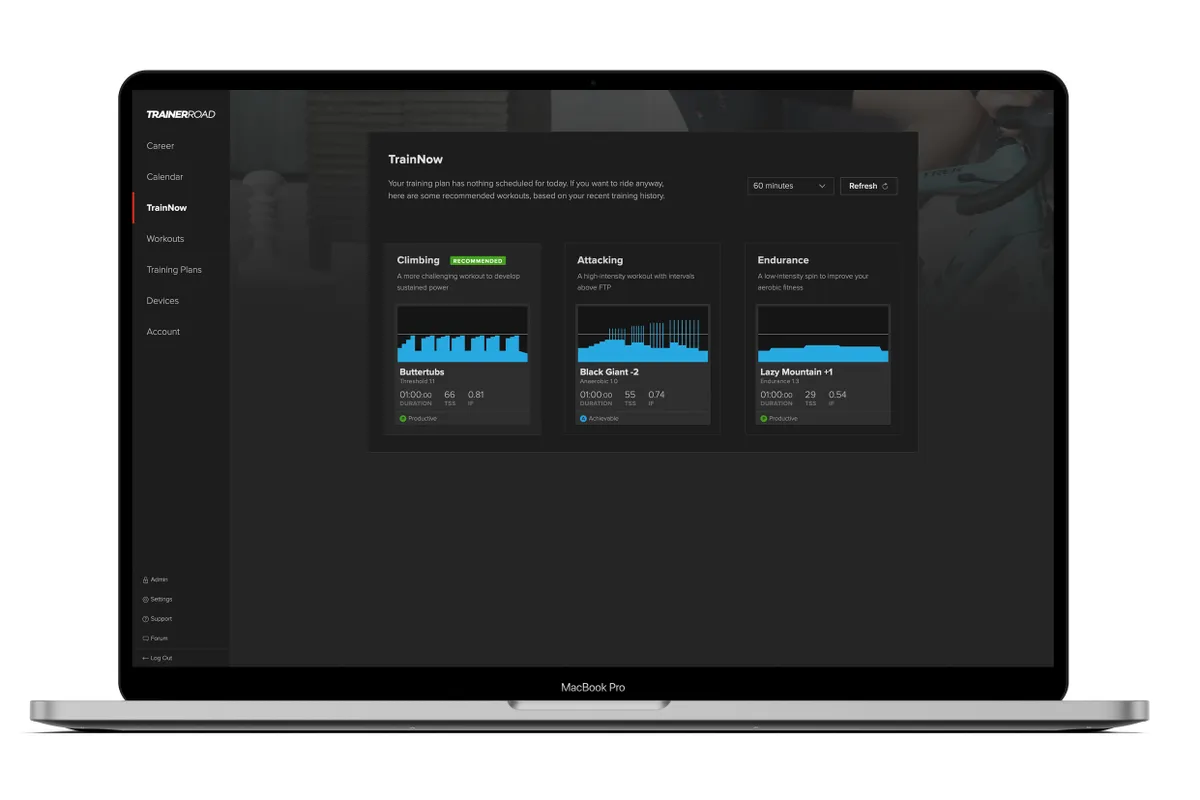
TrainerRoad will fine-tune your plan on an ongoing basis, based on your current performance, as well as factoring in missed sessions (with the option to move or change a workout) or planned time off.
Adaptive Training is also used to make TrainNow recommendations, while for each session in a training plan, TrainerRoad will offer ‘Workout Alternates’. Here, TrainerRoad will make recommendations with a similar difficulty and profile to the original workout, but with the option to find sessions that are shorter or longer, based on the time you have available.
Progression Levels
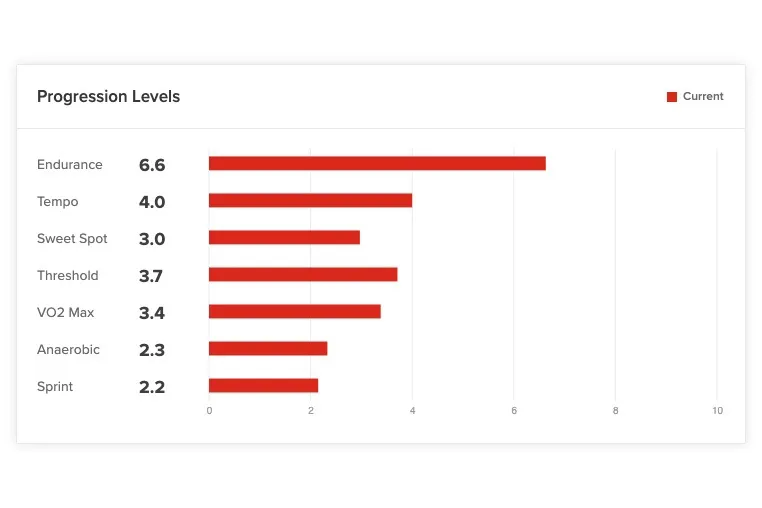
Another key aspect of TrainerRoad’s approach is that, rather than just measuring your FTP (Functional Threshold Power) and its changes over time, it measures your Progression Levels in seven areas, broadly aligned to the key training zones: endurance, tempo, sweetspot, threshold, VO2 max, anaerobic and sprint.
The aim, TrainerRoad claims, is to provide a fuller picture of how your fitness is evolving, rather than relying on a single figure, as is the case with FTP.
“Each level is individually measured on a scale from one to 10, with one representing the baseline and 10 representing the highest level of ability at any given FTP,” says TrainerRoad.
“In general, your Progression Levels will start out in the lower range as you begin a training block. As you progress through workouts and training weeks, your Progression Levels will change to reflect your development in each zone.”
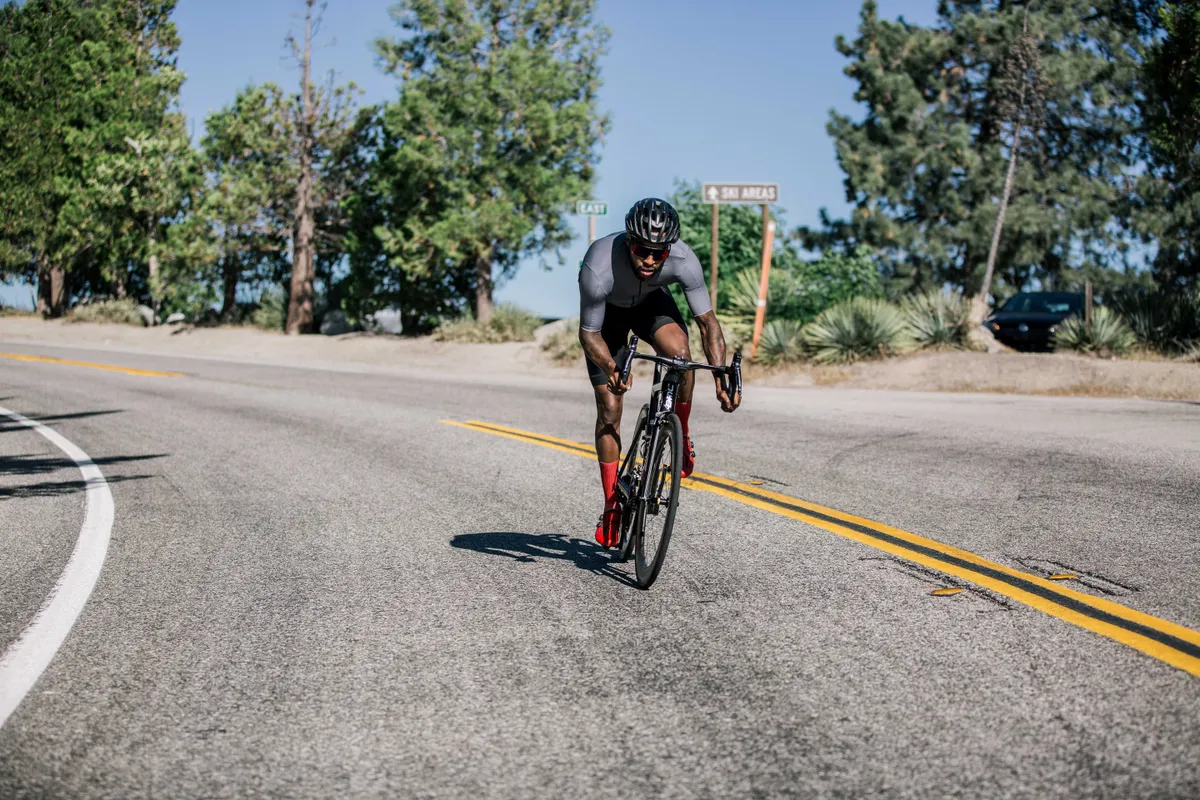
TrainerRoad says its workouts will focus on the Progression Levels most important to meet your objectives, whether that’s to up your endurance, win a sprint or climb better.
TrainerRoad says your relative strengths and weaknesses across these dimensions can change, even if your FTP remains the same, and that it will pick from its range of workouts to match your training needs to improve across each dimension.
After each workout, it will grade you on how much the workout has contributed to your progression – most workouts are aimed at progression in one dimension, but you may see progression in other dimensions as well.
If you complete a workout at or below your current level, you may not see a change. Equally, if you skip a few days, TrainerRoad will adjust your Progressional Levels to reflect this.
TrainerRoad’s AI also extends to automatically detecting changes in your FTP, based on both indoor and outdoor rides.
Career and Calendar
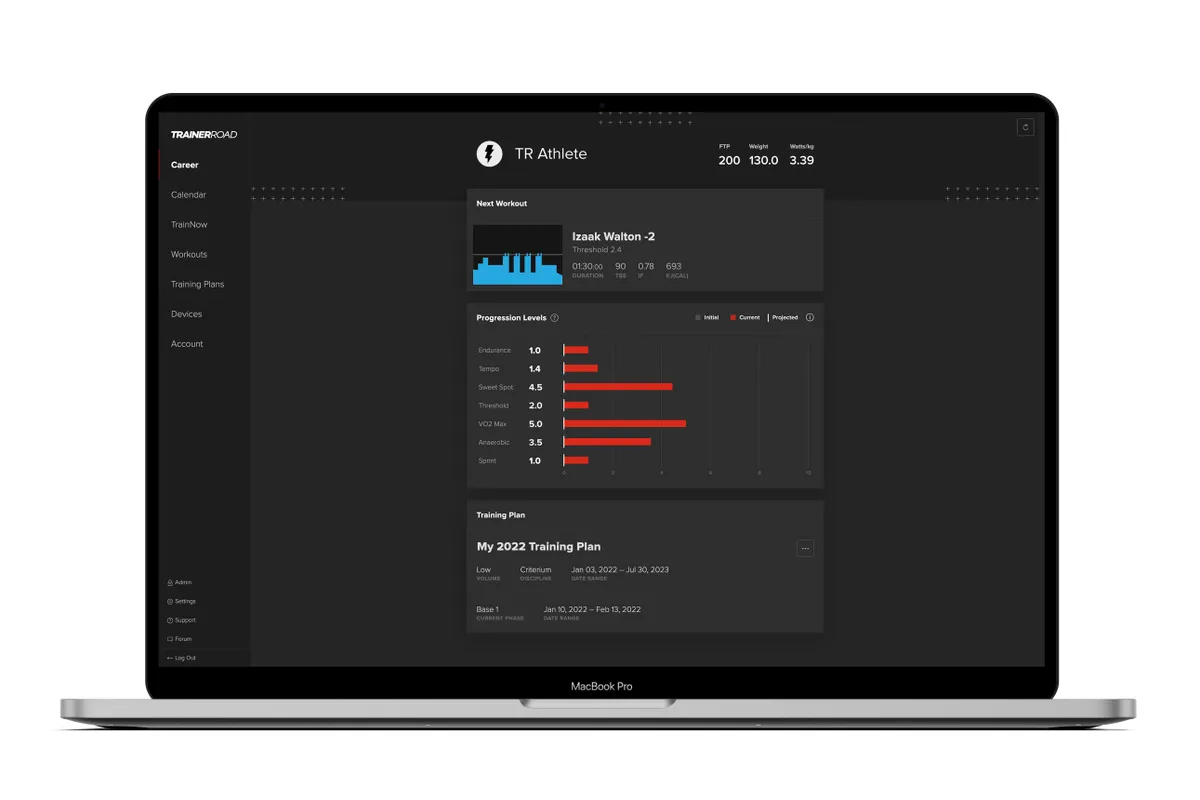
TrainerRoad’s Career and Calendar dashboards provide an overview of your data.
The Career screen shows your next workout, current Progression Levels and a snapshot of your current training plan, as well as basic FTP, weight and power-to-weight ratio data.
The Calendar dashboard provides an overview of past and upcoming workouts. TrainerRoad also offers the ability to log indoor workouts and outdoor rides, so you can see all of your training – and the associated data – in one view.
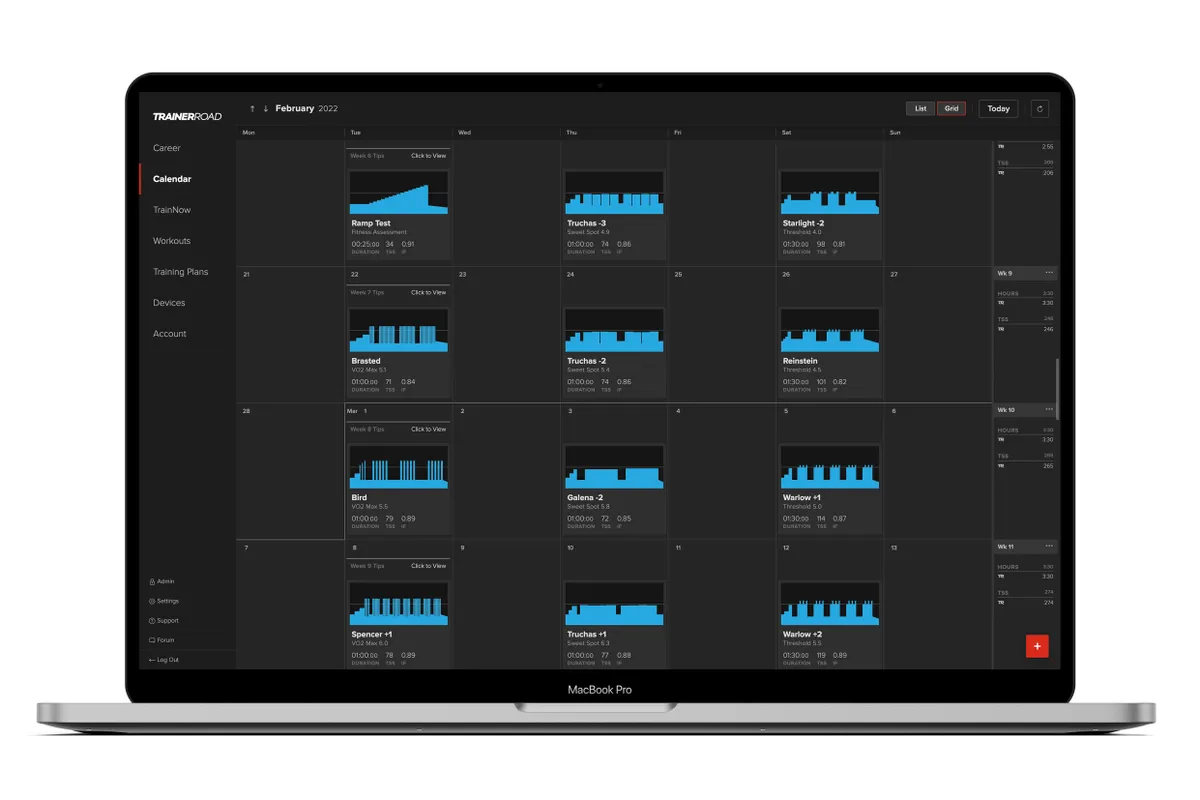
How much does TrainerRoad cost?
TrainerRoad costs $189 for a year if you pay in advance. You can also pay month by month, which costs $19.95, working out at $239.40 a year. That’s more expensive than Zwift and Wahoo X, both of which are currently priced at $14.99 per month.
TrainingPeaks costs $19.95 if billed monthly, but you can reduce that to $124.99 a year by paying for a year up front, making it significantly cheaper with a monthly equivalent price of just over $10.
Whereas most other platforms offer you a free trial period before you need to purchase, with TrainerRoad you pay up front and it offers you a 30-day money-back guarantee if you decide it’s not for you.
TrainerRoad vs the competition
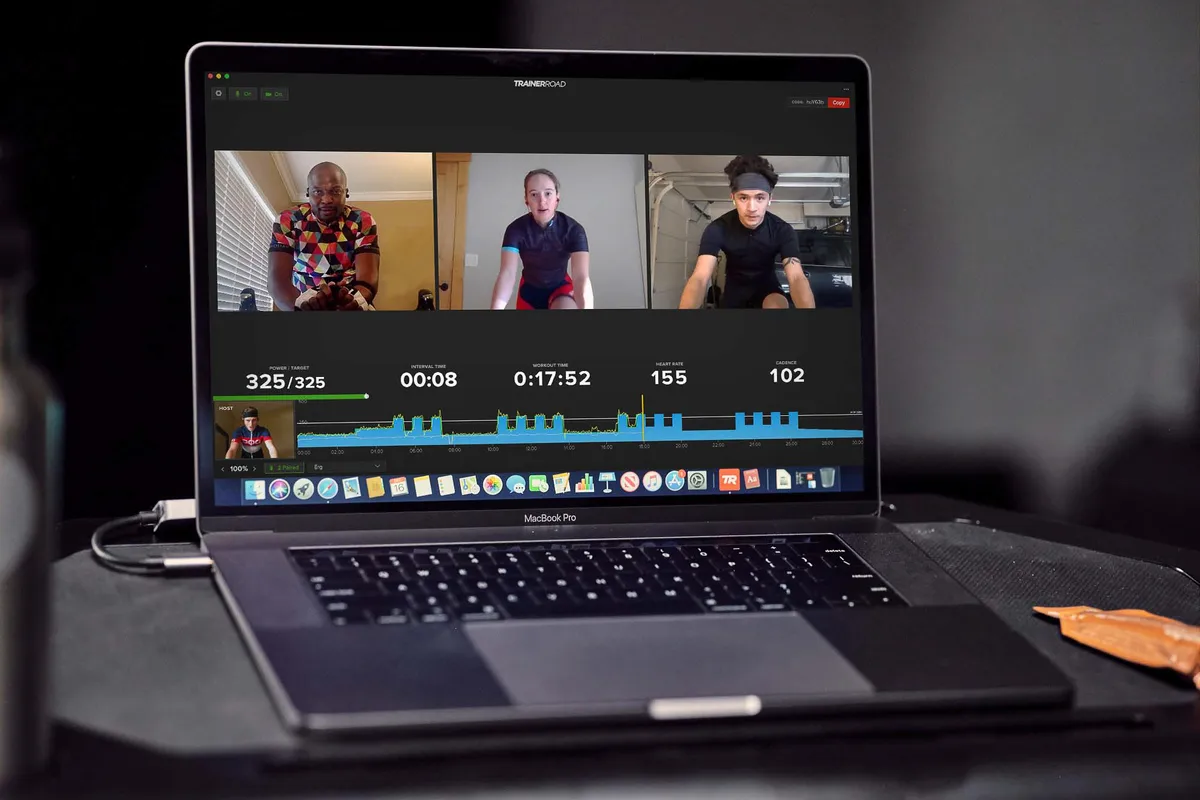
If you want to ride through a jungle or climb a virtual replica of a real road, you’ve come to the wrong place.
TrainerRoad’s training environment focuses exclusively on workouts, with images of upcoming output ramps and your power data on screen rather than a virtual world with avatars and real people to race against.
It’s a more solitary experience for riders focused on training goals and down to you to find the motivation. TrainerRoad says its "straightforward interface can be easily combined with whatever entertainment you would like to use to motivate you".
Its claim that your entertainment options as you ride are unrestricted is slightly wide of the mark, but it offers a minimised computer interface so you can run Netflix, YouTube or whatever in the foreground.
The app also offers a Group Workouts feature, so you can complete a workout with another TrainerRoad subscriber, see each other's metrics and communicate via video and voice chat.
If you want a gamified virtual riding experience, this is covered comprehensively by other training apps.
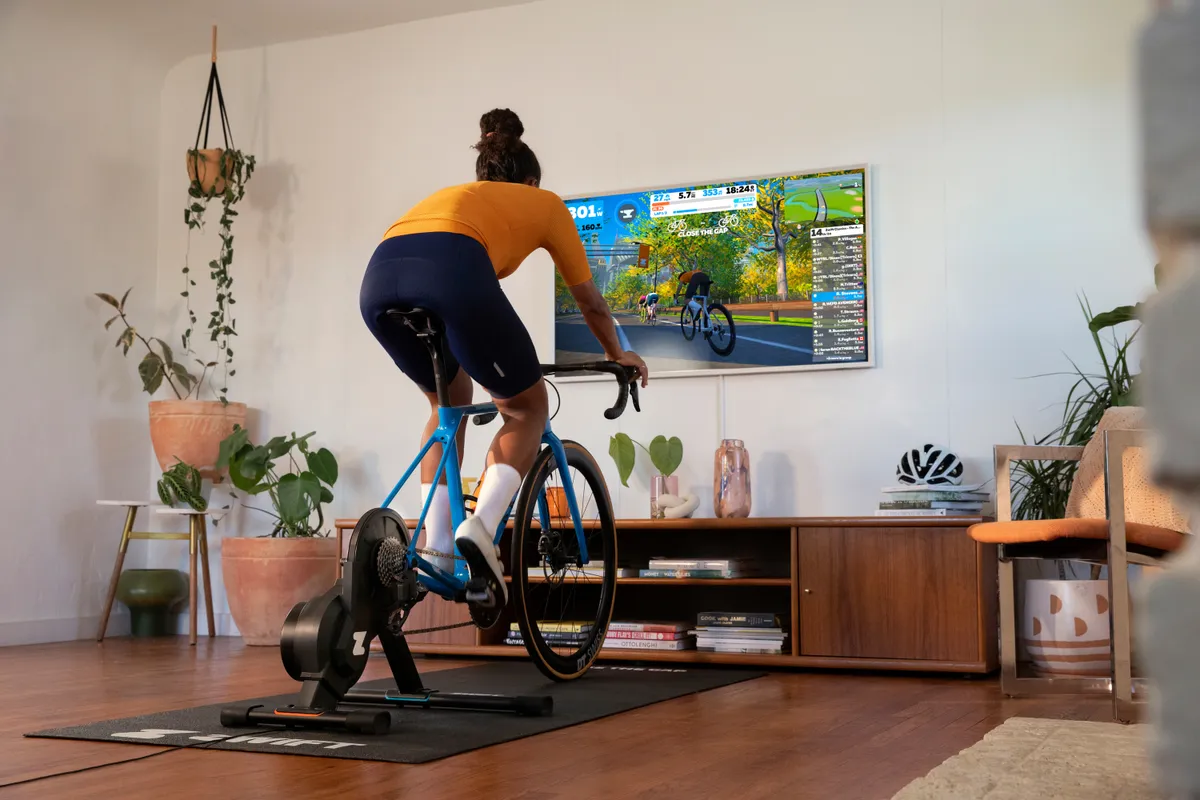
Zwift is the dominant player, offering a range of virtual worlds to explore with your custom avatar (and alongside thousands of other riders).
It also has gamified elements such as PowerUps and the accumulation of XP (experience points) to move through levels, and enhanced social features, including Zwift racing, events and group rides.
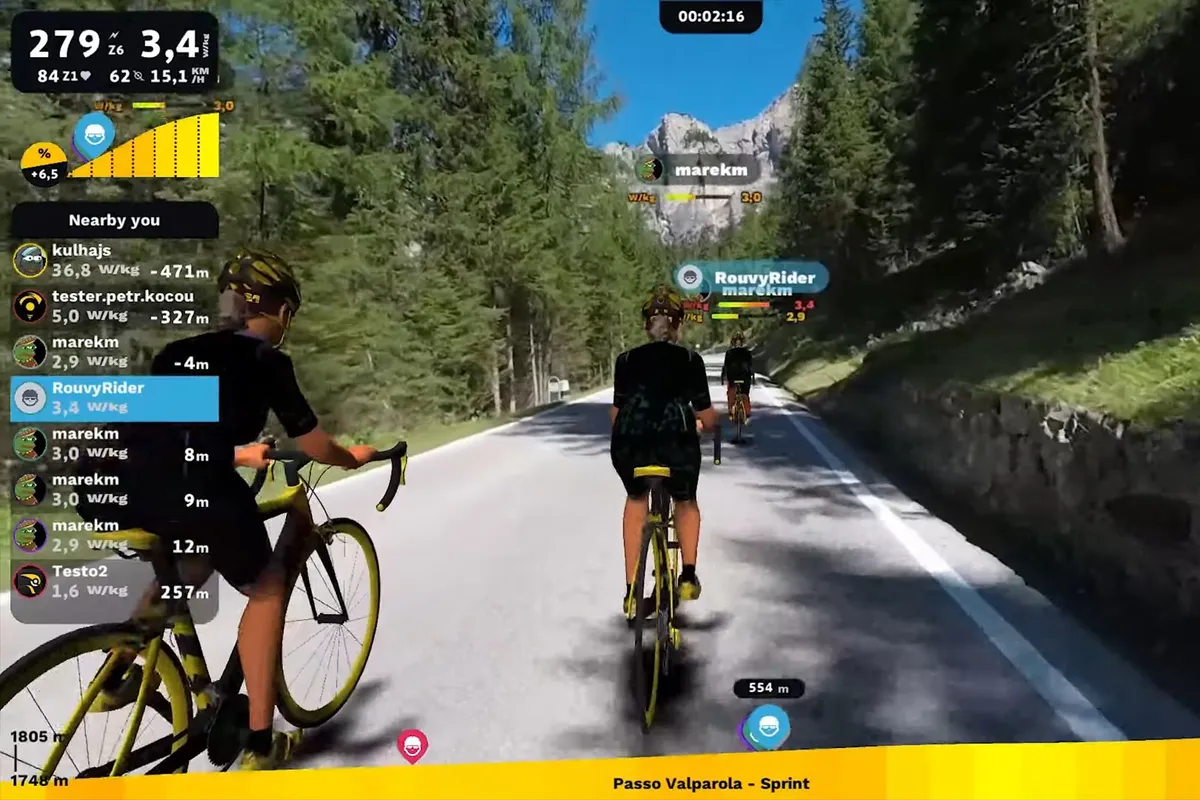
Rouvy, meanwhile, is an augmented reality cycling app, where your virtual avatar is superimposed on footage of real-world roads. You can also race against virtual avatars or other users.
For performance-minded riders, TrainerRoad isn’t the only app that focuses on training rather than a virtual cycling experience.
TrainingPeaks, for example, also gives you routine-based training without the gamified element. Wahoo SYSTM offers the notorious Sufferfest structured workouts as part of its content, alongside documentary content on professional cycling life, famous routes and more.
What TrainerRoad claims to offer that’s unique is the adaptive, personalised and science-led training element, alongside the breadth of its plans and workouts.
What do you need to get started?

The good news is that TrainerRoad supports a wide range of hardware – it says more than 200 devices – and you can use the platform with a simple setup.
Turbo trainer
The most basic option is a non-smart turbo trainer that is not interactive but requires you to change its resistance and a speed sensor. TrainerRoad has an algorithm called ‘Virtual Power’ that converts your speed sensor data into an estimated power output.
TrainerRoad keeps an assessment of the power curve for each supported model of a non-smart trainer relative to how fast you’re pedalling, in order to estimate the power you’re putting out.
There’s a list of supported trainers on TrainerRoad’s website and it has a method to 'borrow' a known power curve if your trainer is not listed. It recommends either Wahoo or Garmin speed sensors to provide the speed data it needs.
While this may be an affordable route into training with (estimated) power, it won’t be as accurate as using a power meter or smart trainer. Also, what this setup can’t do, is automate the changes in trainer resistance, as a smart trainer can, meaning it’s up to you to hit the required wattage during an interval
Power meter on your bike
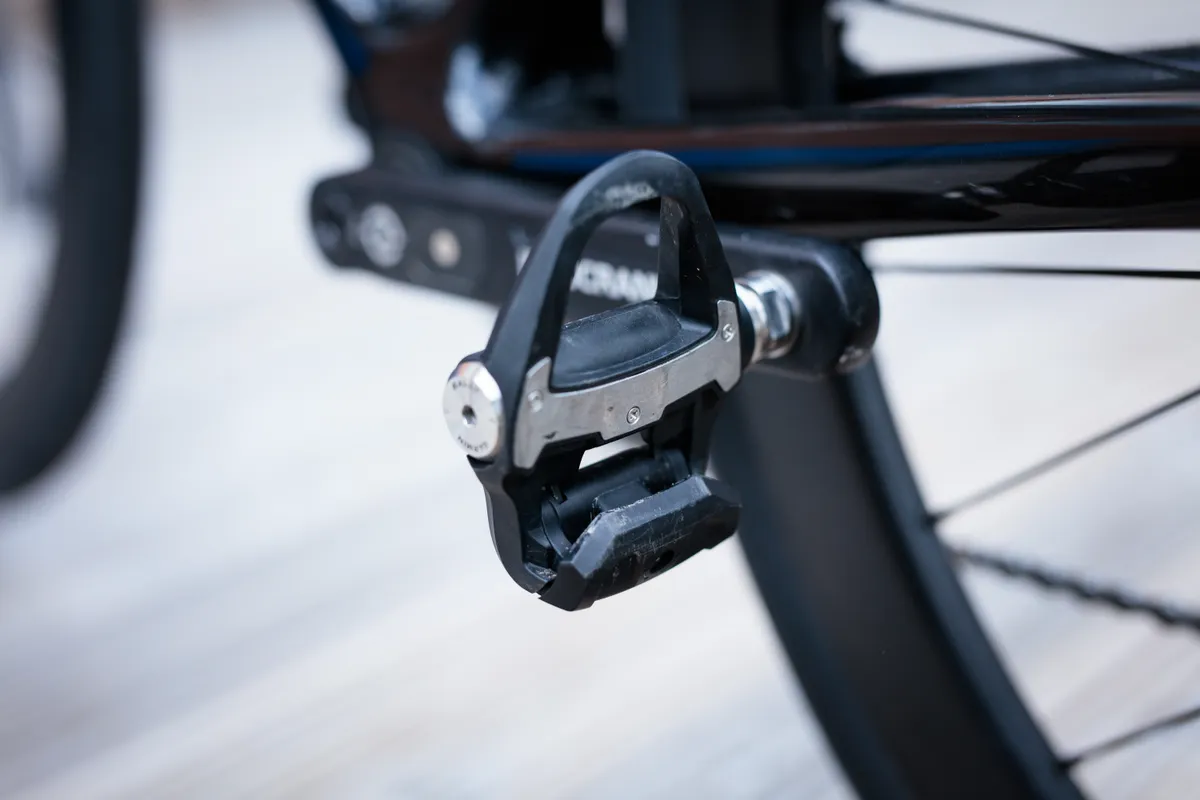
The next option, if you don’t have a smart trainer, is to use a power meter on your bike, giving you accurate power output numbers.
This means TrainerRoad can use this data to adjust your power targets to your actual measured fitness level. You can also take some of your training outdoors, with TrainerRoad’s routines transferred to your bike computer rather than having to sit on the turbo for every session.
This functionality is available with a Garmin or Wahoo computer, while TrainerRoad’s recommended power meters are Quarq, 4iiii, Stages, Garmin and Favero.
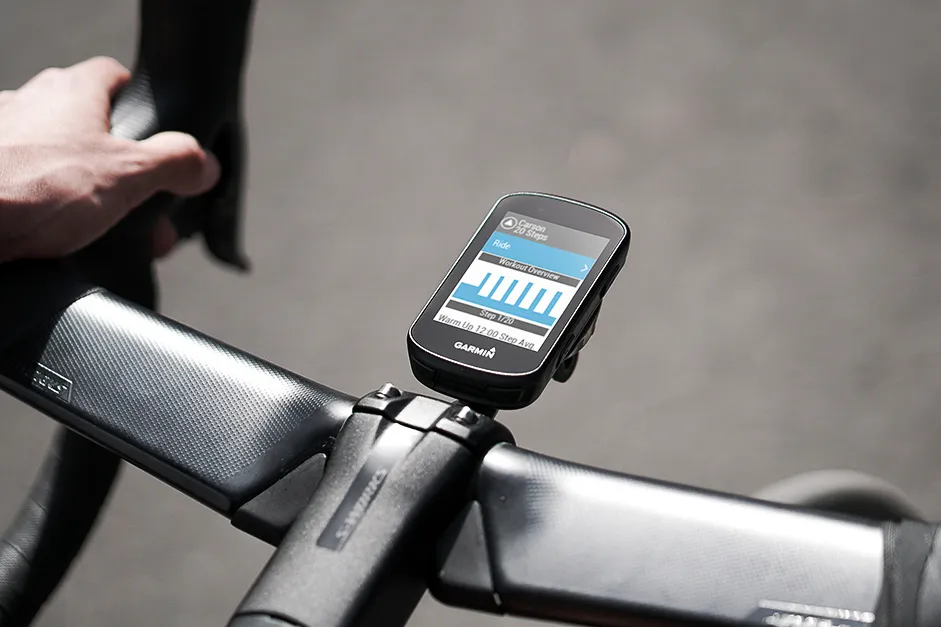
Smart trainer
Using one of the best smart trainers is the final option – and the one most riders will take.
Again, it means you can train with measured – and accurate – power, although obviously, you’re not going to be able to perform workouts outdoors, unless you also have a power meter on your bike.
Using a smart trainer means you can set it to ERG mode, so your resistance is changed automatically by the app as you go through a workout.
This enables you to either focus on your workout or, alternatively, zone out to music or Netflix and not worry about the numbers on your screen. It also means you’re hitting the numbers you need to, whether that’s during an interval or recovery.
If you’ve got both a power meter on your bike and a smart trainer, you get the best of both worlds because you can ride indoors and out, and use your power meter to control your trainer, for consistent power results. Once again, TrainerRoad has a list of supported smart trainers.
